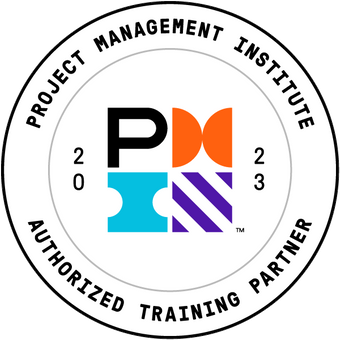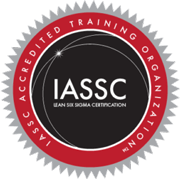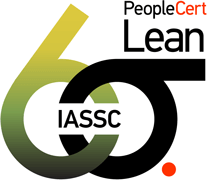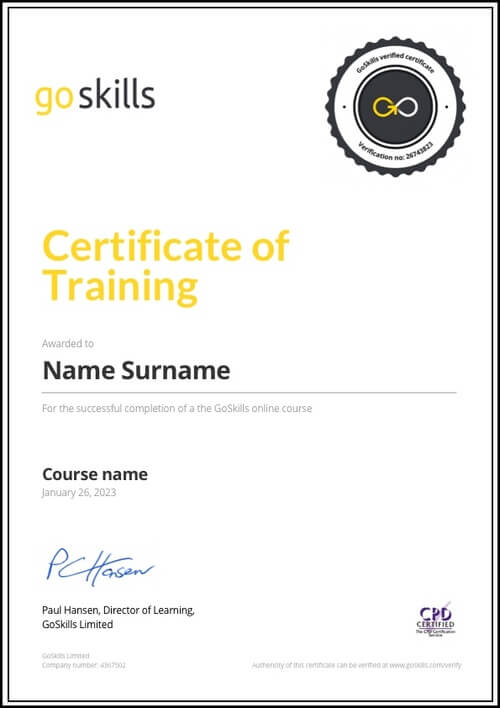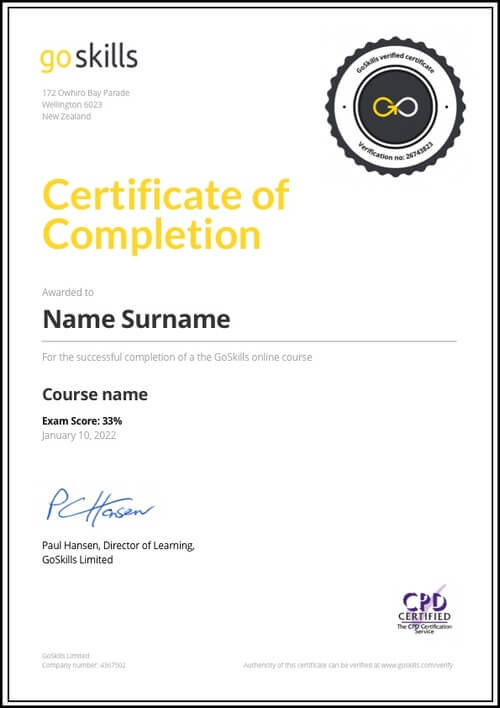Features
Premium video tutorials
Award-winning instructors
Personalized learning
Get certified
Learn at your own pace
Mobile (learn on-the-go)
Unlimited tests and quizzes
Regularly updated content
Overview
This course is part of our Lean Six Sigma Green Belt program, which consists of four courses designed to prepare you for the International Association of Six Sigma Certification (IASSC) Green Belt exam. We recommend you take all four courses in the program to be fully prepared for the exam.
Lean Six Sigma is a proven business process improvement methodology for companies striving to gain a competitive edge. In high demand across a diverse range of industries, Lean Six Sigma training is a powerful way to become an indispensable asset at your organization and improve your career prospects.
In this online course, you will first gain a solid foundation in the methodology, principles and tools of Lean Six Sigma. Then your knowledge will be taken to the next level and you will learn the skills needed to lead a Lean Six Sigma project as a Green Belt practitioner.
Highlights:
- 62 practical tutorials with videos, reference guides, exercises and quizzes.
- Designed to prepare you in part for the IASSC Green Belt exam. To prepare in full, you should also take the Statistical Process Control, Measurement Systems Analysis, and Hypothesis Testing courses part of our four course Lean Six Sigma Green Belt program.
- Understand the requirements and application process for Lean Six Sigma certification with internationally recognized accreditation body, IASSC.
- Identify Lean Six Sigma principles and how the Lean and Six Sigma methodologies complement each other.
- Learn the roles, phases, and deliverables of a Lean Six Sigma project and your responsibilities as a Green Belt project leader.
- Master the Lean Six Sigma fundamentals, including Critical to Quality (CTQ), variation, and process management, as well as more advanced techniques such as hypothesis testing and statistical process control.
- Build competency in all 5 Phases: Define, Measure, Analyze, Improve and Control (DMAIC).
- Aligned to the IASSC Lean Six Sigma Green Belt Body of Knowledge.
- The only method to earn an IASSC certification is to successfully sit for and pass an official IASSC certification™ exam, which can be taken through IASSC. We do not provide access to IASSC Certification exams.
- Earn 26 PDUs or contact hours toward your Project Management education for certification with PMI.
Once enrolled, our friendly support team and tutors are here to help with any course related inquiries.

- 720p
- 540p
- 360p
- 0.50x
- 0.75x
- 1.00x
- 1.25x
- 1.50x
- 1.75x
- 2.00x
Summary
Syllabus
Overview and Background Free Lesson
1
History of Continuous Improvement
Lean Six Sigma is a proven business process improvement methodology that builds on the best practices and experiences of earlier approaches. It combines best practices around customer focus, empowered teams, process definition, and data analysis.
2
Six Sigma Principles
3
Lean Principles
4
Lean and Six Sigma
Lean and Six Sigma are easily blended. They have many similarities in methodology – process focused, team based, and project management. The differences, analyzing quality data versus flow data, are complementary and together provide a balanced view of the process.
Certification Free Lesson
1
IASSC Testing Approach
2
IASSC Green Belt
The IASSC Green Belt certification is appropriate for a Lean Six Sigma project leader. The Green Belt Body of Knowledge is the list of topics and tools that a Green Belt practitioner should know.
Lean Six Sigma Project
1
Roles and Responsibilities
2
Project Phases
The Lean Six Sigma methodology relies on a five-phased project management methodology. The phases Define, Measure, Analyze, Improve, and Control provide structure to the project.
3
Project Deliverables
4
Project Charter & Business Case
The Lean Six Sigma methodology encourages the use of a project charter and the creation of a business case to set boundaries on the project and to manage stakeholder expectations.
5
Project Reviews
The Lean Six Sigma methodology involves stakeholders through a set of project reviews. Each type of review has a goal and purpose.
Lean Six Sigma Fundamentals
1
Critical To Quality (CTQ)
2
Variation
3
Elements of Waste
Waste can take many forms including high costs, delayed timing, rework, redundant work and idle processes. One of the primary goals of a Lean Six Sigma project is to identify areas of process waste and eliminating or reducing those sources of waste.
4
Y=F(x)
5
Process Management
6
Lean Six Sigma Metrics
Define Phase
1
Project Selection
One of the decisions that must be made during the Define Phase is the selection of the project and its boundaries. Lean Six Sigma projects are often part of a portfolio of projects that may be selected and approved as a bundle.
2
Pareto Principle
The Pareto principle is a widely accepted technique for prioritizing effort and activity. The Pareto principle will typically be applied in every phase of a Lean Six Sigma project, including this initial Define phase where it is used to prioritize the areas of focus for the project.
3
Voice of the Customer
Lean Six Sigma methodology is grounded on the voice of the customer. The Define phase collects and assesses information concerning the customer perspective and uses it to focus the project activities.
4
Cost of Poor Quality (COPQ)
5
Process Mapping
In order to improve process performance, the Lean Six Sigma project team must understand the current state of the process. Process Mapping is the technique for describing the process and providing a framework for collecting process data.
6
Lean Value
Lean Six Sigma projects apply the Lean principle of value-added effort in the definition of the project and when identifying the opportunity for improvement.
Measure Phase Free Lesson
1
Problem Statement
The problem statement clarifies the goals and activities of the Lean Six Sigma project by specifying the issue to be resolved. It's an excellent communication tool for the team to use with stakeholders.
2
Problem Definition Tools
3
Data Types
There are two types of data: variable and attribute. Both types are useful in measuring process performance by analyzing process problems, but they need to be treated differently.
4
Measurement Systems
5
Measurement Errors
6
X/Y Matrix
The X/Y matrix is a tool that maps the Voice of Customer needs and concerns onto the process steps and inputs. This tool can take on several different formats, but any of them will provide the Lean Six Sigma team with insight as to the contributing factors of customer value.
7
FMEA Principles
The Failure Mode Effects Analysis (FMEA) tool highlights areas of high product design or process execution risk. This tool provides insight into possible causes for observed failures.
8
Value Stream Mapping
9
Value Stream Map Data Box
The Value Stream Map Data Box is the technique used to capture and analyze data at each step of the Value Stream Map.
10
As-is Metrics
The As-is metrics are the measured current state of the process or problem. It is not the best-case, the worst-case, or the “as-designed” case; it is the current average performance of the process or problem.
11
Data Collection
The purpose of the Measure phase of a Lean Six Sigma project is to collect complete, accurate and meaningful data. There is a simple data collection approach that can be used by the team to ensure this is accomplished.
Basic Six Sigma Statistics
1
Descriptive Statistics
2
Normal Distribution
The normal distribution charts the type of variability in a process parameter that is being measured when the only cause for variation is natural random physical effects. It's the desired distribution when improving a process since it delivers a predictable level of process performance.
3
Basic Graphical Analysis
4
Graphing of Complex Data
When the process or problem data set has multiple characteristics, there are a set of graphing techniques that can show these effects. Although more complex than the basic techniques, they are easy to use and create a picture of the data set.
5
Process Stability
6
Run Chart
7
Process Capability Principles
8
Z Scores
Z scores are a method of normalizing data from different data sets for comparison or prediction. Z scores normalize the data using the process standard deviation. The Z transformation table will convert Z scores into percentages.
9
Central Limit Theorem
The Central Limit Theorem is a principle that is used to transform non-normal raw data into a data set that is normal.
Analyze Phase
1
Problem Analysis
Problem analysis is the methodical approach to analyzing a problem and finding the root cause or causes. It normally includes creating and testing an hypothesis or an experiment to determine the cause.
2
Statistical Analysis
Statistical tests are often used to aid the problem analysis. The statistical analysis of a small sample of data can point to root causes of problems in the full data set.
3
Visual Analysis
Graphical analysis techniques are particularly good for illustrating significance, similarities or differences, and correlation between parameters within a data set.
4
Lean Flow Analysis
The Lean process analysis will reveal flow process flow problems. Lean techniques can be used to analyze flow at both a total process (macro) level or at a process step (micro) level.
5
Lean Quality Analysis
The process analysis of the value stream map will reveal quality issues that are occurring within process steps. These are identified by analyzing step data and process flow data.
6
Lean Resource Analysis
Analysis of the Lean value stream map and the related data can reveal wasted resources; both people and product or service items that are being processed.
Improve Phase
1
Problem Improvement
Problem solving often requires an interim solution while a permanent solution is being developed and validated. When multiple possible solutions are available, the team should recommend a solution approach.
2
Solving Special Cause & Common Cause Problems
Special cause problems should be resolved first in order to achieve process stability. Then common cause problems are addressed to reduce process variation.
3
Intro to Design of Experiments
Design of Experiments (DOE) is an experimental technique for identifying the primary factors within a system that determine system performance. DOE is particularly useful in complex systems where there are interactions between factors and relationships are not obvious.
4
Lean Improvement: Flow
Lean process improvements are designed using a “should be” value stream map that shows the new flow. The data box on this map estimates the impact of the elimination and redesign of process steps and the removal of system constraints.
5
Lean Improvement: Pull
The benefits of Lean improvements rely on changing the process schedule management approach in addition to process redesign. Pull scheduling and visual management are used to maintain smooth flow in the process.
6
Solving Problems with Poka Yoke
Many problems can be solved using mistake proofing approaches that are embodied in the five Poka Yoke principles that both detect and prevent errors from occurring.
7
Solving Problems with Five S Principles
The Five S principles can be used to organize the work place and support and sustain the problem solutions by reducing the likelihood of confusion and rapidly exposing process degradation.
Control Phase
1
Cost - Benefit Analysis
2
Control Plan
3
Response Plan
A key element of the control plan is the response plan. It tells the process operators what to do when the process begins to deviate from the parameters laid out in the control plan.
4
Prevention as Control
5
Lean Process Control
Lean process control focuses on maintaining the process flow of the Should-Be process. It relies on principles of visual control, empowerment, and continuous improvement.
6
Statistical Process Control
Statistical process control uses real-time process data to determine whether a process is maintaining the improvements that were implemented. Control charts will indicate special cause and common cause variation, empowering process operators to maintain process quality.
7
Implementing the Solution
Implementing the technical changes of the solution are often easy, the difficulty is usually the emotional and cultural resistance to change. The implementation should be planned and managed as a project. The project should include the actions taken to change the business systems and structures in addition to the specific problem solution.


